This article has been reviewed according to Science X's editorial process and policies. Editors have highlighted the following attributes while ensuring the content's credibility:
fact-checked
peer-reviewed publication
trusted source
proofread
Camera-trap study provides photographic evidence of pumas' ecological impact
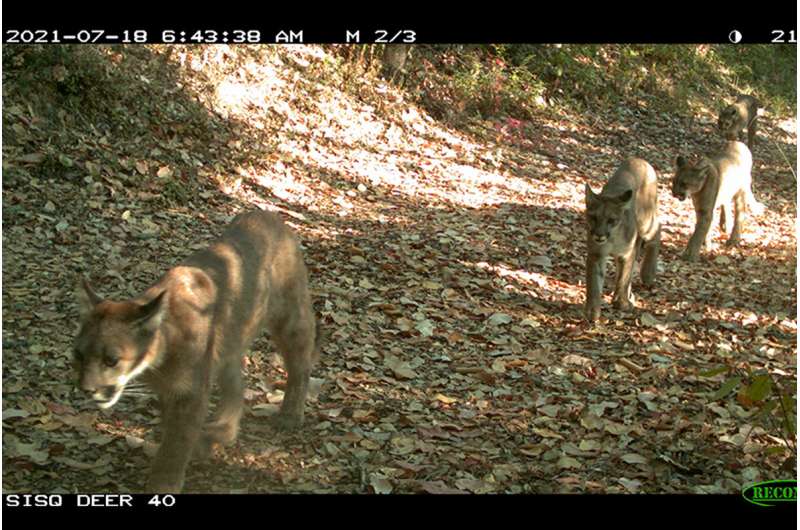
A camera-trap study of two ecosystems—one with pumas and one without—adds to scientists' understanding of the many ways apex predators influence the abundance, diversity and habits of other animals, including smaller carnivores.
Reported in the journal Ecosphere, the study followed multiple members of the order Carnivora, looking at how the largest carnivore in each locale influenced the behavior and presence of other animals in the same vicinity.
"Nobody's really looked at how the whole carnivore community changes when you lose that top predator," said Alex Avrin, who led the research as an M.S. student at the University of Illinois Urbana-Champaign with Max Allen, a research scientist at the Illinois Natural History Survey and professor of natural resources and environmental sciences at the U. of I. Avrin is now a scientist with the California Fish and Wildlife Service.
Previous studies have shown that pumas tend to suppress populations of medium-sized carnivores like coyotes, which do their best to avoid pumas, Avrin said. Reduced coyote populations allow other medium-sized carnivores to flourish. This has a cascading effect on many other species.
Pumas also leave behind a lot of carrion, allowing a host of scavengers—from microbes to birds and other animals—to feast on the remains that the pumas don't consume, Avrin said. Coyotes tend to target smaller species and eat most of what they kill, leaving less behind for other creatures.
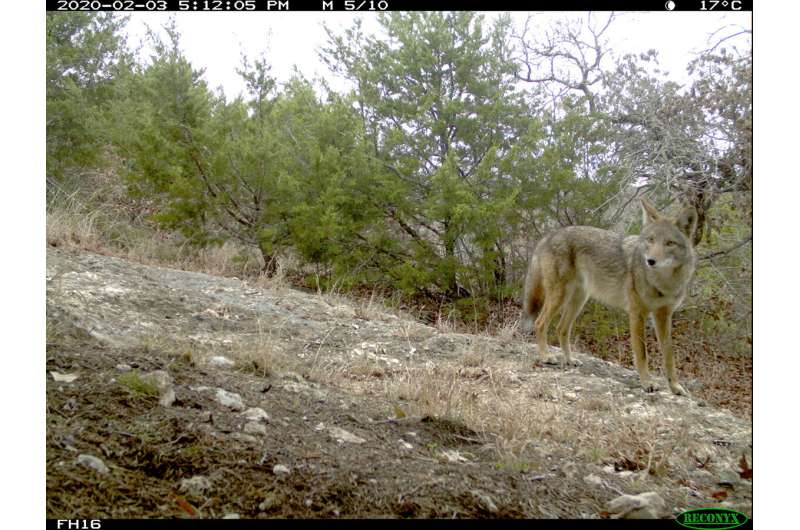
The researchers wanted to compare the dynamics of ecosystems with and without pumas.
"We specifically wanted to look at whether, in the absence of pumas, coyotes step up and fill that role of the apex predator," she said.
Over several weeks-long or months-long sessions between 2011 and 2019, the researchers deployed grids of motion-activated cameras in various locales in the southern Santa Cruz Mountains of California and across the vast military installation of Fort Hood, Texas. The Santa Cruz site has a healthy population of pumas as well as bobcats, gray foxes, raccoons, striped skunks and coyotes. Fort Hood has those same carnivorous mammals except pumas. It also hosts the eastern spotted skunk and the ringtail, a member of the raccoon family. All of these species were included in the new analysis.
"We used the photos to get an idea of which species were at each site, what areas they were using and how frequently we detected them," Avrin said. "And we used a couple of different measures to look at how the smaller carnivores behaved around both the pumas and coyotes."
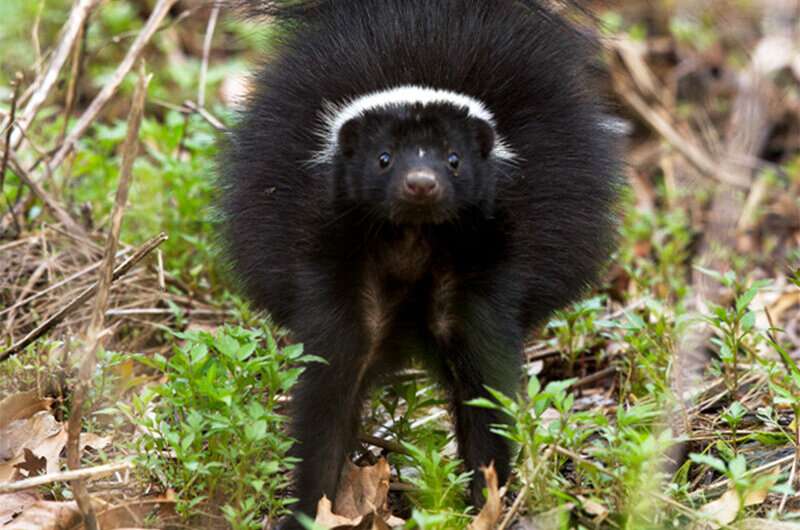
The two locales were similar enough to make these comparisons, "but of course climate, human land use and other variables differed between the sites," she said.
As expected, the analysis revealed that wherever pumas were present, coyotes were rarely seen. While other carnivores also appeared to avoid pumas, they were much more likely to be detected by the same camera traps as pumas—just at different times. Even bobcats and gray foxes used areas frequented by pumas more often than the researchers expected.
In Fort Hood, where pumas were absent, coyotes had a different effect on the other carnivores.
"If coyotes were filling that same apex role that pumas do, we would expect them to suppress bobcats—their next largest competitor—releasing the smaller carnivores," Avrin said. "And what we found is that they really just suppressed everything—bobcats and the other carnivores."
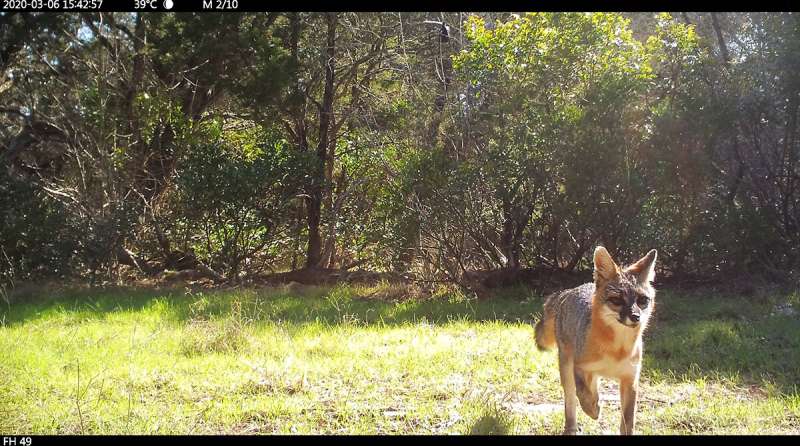
The coyotes appeared to exert less of a suppressive effect on the other carnivores than the pumas had on coyotes, she said.
"This is a correlational study, so we can't say definitively that the absence of pumas caused these other effects," she said. But the study strongly suggests that coyotes do not replace the apex predator in an ecosystem that lacks pumas.
"So yes, when you lose an apex predator, pretty much your whole ecosystem is going to change," Avrin said.
"In the absence of pumas, you'll likely have more intensive grazing by deer, especially in areas near water, which can affect stream flows and other species," she said. "Coyotes, because they can't control those bigger prey populations the same way, don't have the same effect. They likely end up suppressing smaller prey populations, which then changes things in a different way."
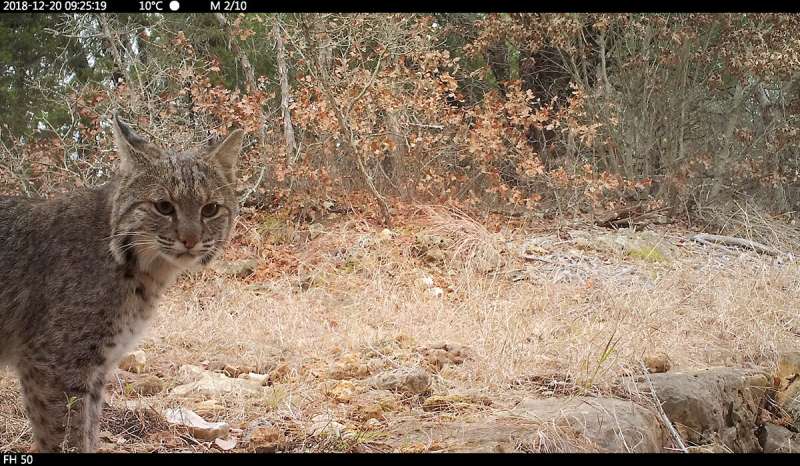
"This study gives us a fuller picture of the changes that occur when an apex predator goes missing," Allen said. "While many people think that smaller carnivores can move into the apex role, we see that mesocarnivores like coyotes don't provide the same effects as a true apex predator. This highlights how important it is to keep each species in place for an intact ecological community."
More information: Alexandra C. Avrin et al, Can a mesocarnivore fill the functional role of an apex predator?, Ecosphere (2023). DOI: 10.1002/ecs2.4383
Journal information: Ecosphere
Provided by University of Illinois at Urbana-Champaign




















